Ever wondered what civilian airliner designs are taking on military roles today? This article takes a look at some unusual jets out there.
Aviation owes a lot of its airliner development to various military aircraft design requirements. Whether it is engine, or airframe developments or both, a lot of design has crossed over to the airlines. Occasionally, though, we see movement in the opposite direction, as well. For the sake of brevity (…), this article will focus on current airliner models and conversions, to military roles. But we will make two historically-significant exceptions.
Old Airliners and Military Veterans
Firstly, we have to mention the Douglas DC-3. We’re doing so primarily to dispel anyone’s impression that the military version came first. While the C-47 saw much higher production numbers in WWII, the DC-3 itself first flew in 1935. Then after the war, a lot of former military planes became DC-3 airliners. But this was a blessing and a curse. They were so plentiful, that aircraft manufacturers weren’t able to sell short-haul aircraft to the airlines for many years.
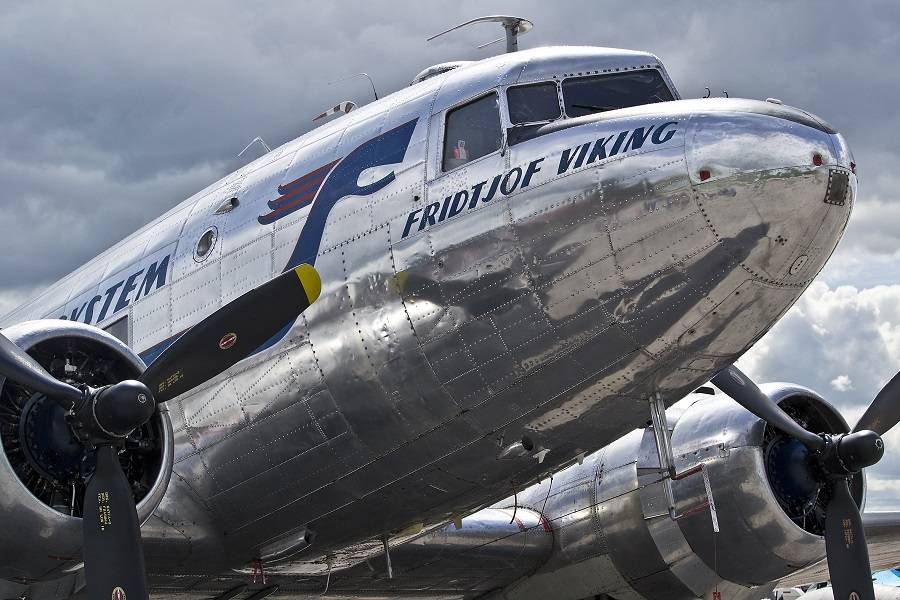
The other out-of-production exception is the KC-135 Stratotanker. Many believe that this military jet is an adaptation or development of the Boeing 707 airliner. This isn’t the case. Both aircraft had a common ancestor, the Boeing 367-80. The company made it with commercial sales in mind. However the airlines didn’t like its five-abreast seating, and asked Boeing to make it a bit roomier. Boeing obliged, but in the meantime, the US Air Force asked them to turn it into a transport and aerial refuel platform instead.
Boeing did so. As a result, the first KC-135 flew in August 1956, over a year before the first 707 prototype. Many think the opposite is true. That is likely because they assume that the KC-135 flew after the C-135, i.e. the simpler, transport version. The latter didn’t fly until 1961. And incidentally, that simpler, transport C-135 originally had the ‘civilian’ Boeing designation of ‘717’. So if you wondered why Boeing had skipped that number… well they didn’t. The plane just didn’t catch on!
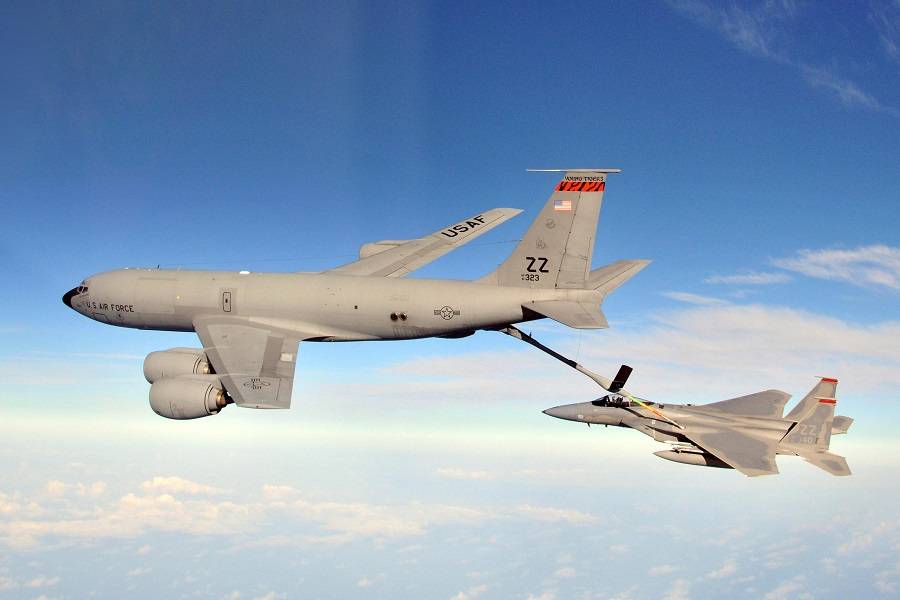
Current Airliners In Military Roles
So let’s see what commercial aircraft out there are in current production as military jets. They are in no particular order but first on the list is arguably the most famous of them. That’s even though calling it a production aircraft, is a bit of a stretch…
The Boeing VC-25B
Most people know it as the Air Force One, even though this is only a call-sign. The model designation of the current US Presidential aircraft is the VC-25A. People often describe it as a military version of the 747-200 airliner. This isn’t entirely true. The presidential plane has the fuselage of the 200, but the engines and most electronics of the 747-400.
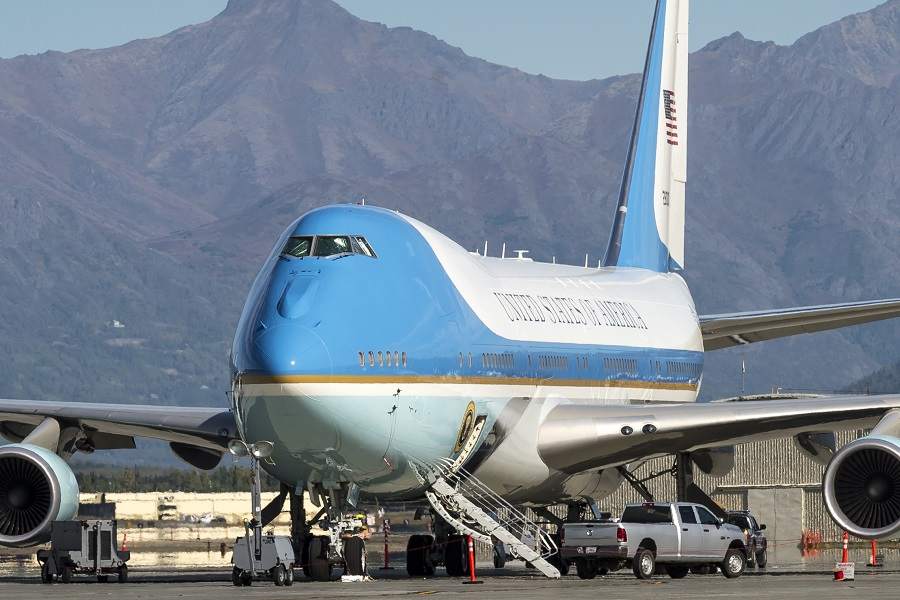
The new VC-25B will be a version of the 747-8. In fact, both military VC-25Bs WERE 747-8 airliners. Boeing had built the two aircraft for Transaero, a Russian airline that filed for bankruptcy before taking delivery. So they never entered service. Boeing and other contractors are currently working on them, turning them into presidential aircraft. Their work started on March last year, and the planes should enter service in 2024.
Information is limited, but Boeing and USAF have confirmed some details. The military VC-25B will have a more potent APU than airliners typically need. The fuselage will have a big lower door with airstairs, like their predecessors. The interior, cockpit and other existing systems will change to new specifications. And technicians will add new electronics for telecommunications, satellite and self-protection systems.
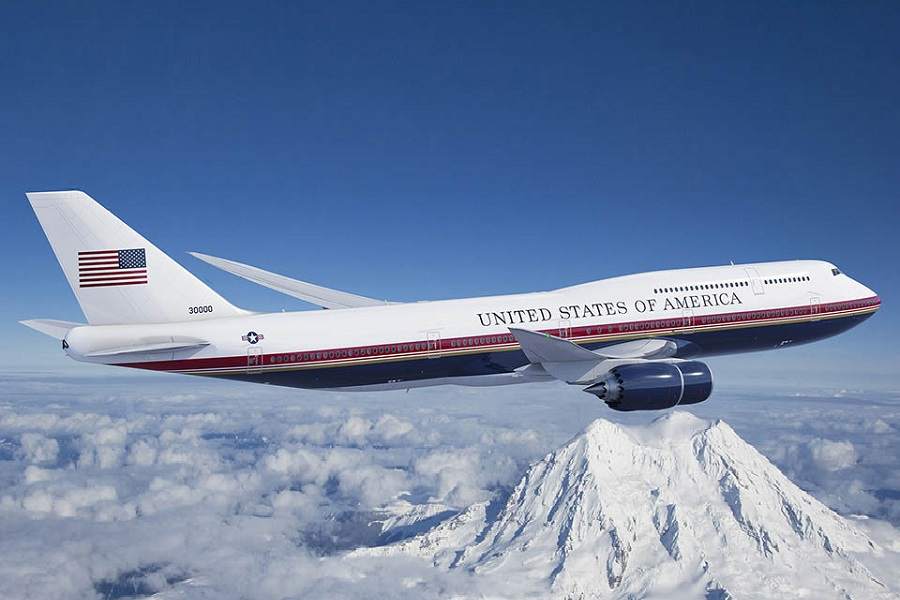
One system that the repurposed airliners won’t have in military service, is aerial refueling. The VC-25A had this ability but never used it, not even during 9/11. More efficient engines and possibly additional fuel tanks add extra range, if necessary. The planes never fly with anything like the numbers of passengers a 747 can carry, anyway. So even without extra fuel, they can fly much further than ‘civilian’ 747s.
Retired Airliner In New Military Role: KC-46A Pegasus
This is a modified military version of the Boeing 767-200 airliner. This aircraft officially entered service in 2019, after many years of delays and a fair few problems. The programme means that the production line of the 767 will stay open until at least 2027. Another contract and more orders are possible, and would extend that production run even more.
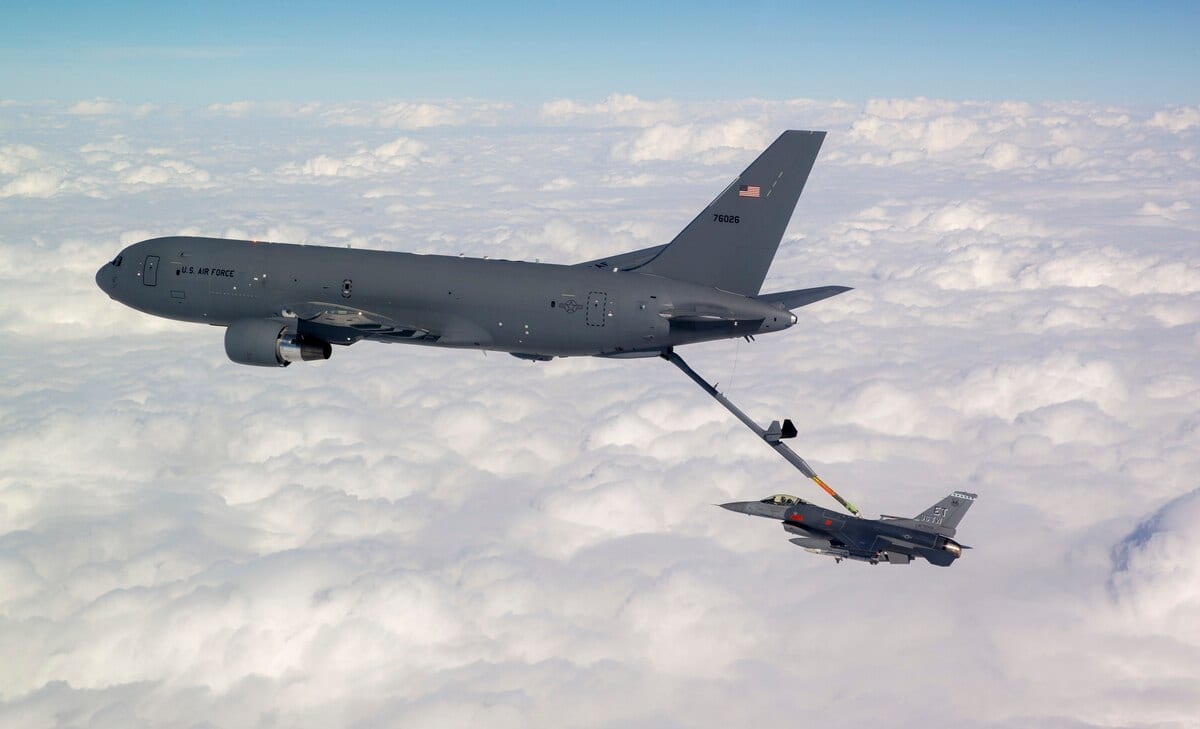
There is more than a bit of controversy around the KC-46. The very short version is that the military initially rejected Boeing’s design in favour of another airliner conversion, the A330. That competition was annulled, and another took place, where Boeing won. Then various issues (some arguably not Boeing’s fault) caused delays, and serious cost overruns. Boeing’s contract says they’re responsible for covering most of these overruns…
Some also question the choice of aircraft. When USAF bought the military KC-135, they beat the airliner version to service by a year. Now they are getting a modified 1983 airliner, in 2019. They will certainly have a lot of spare parts if they need them, from planes sitting in various desert fields. However, they intend to keep these aircraft in service for 40 years! But to be fair, military aircraft only see a fraction of the flight hours of an airliner, per year.
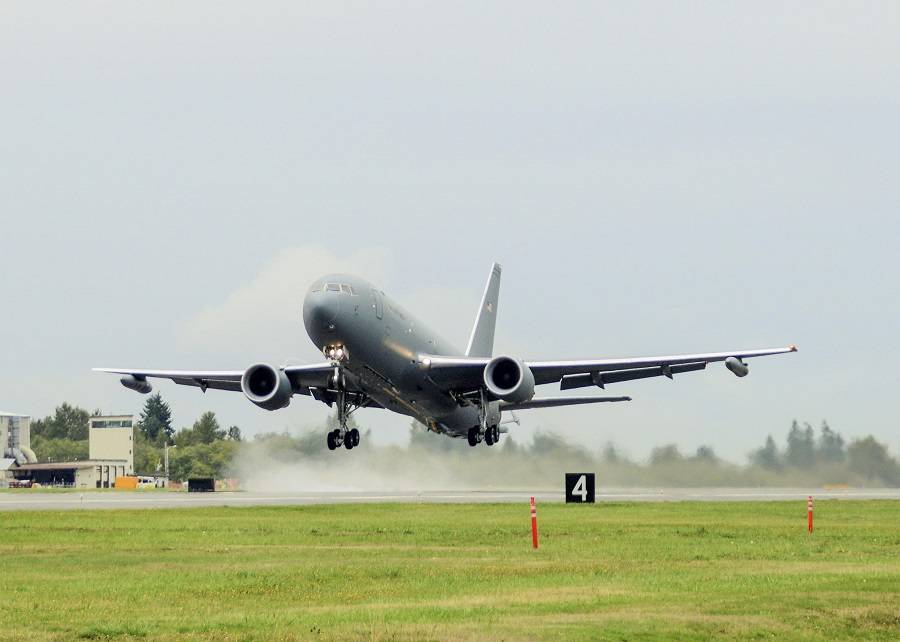
As for the aircraft itself, it is essentially a 767-200LRF (long-range freighter) modification. The military version of the airliner incorporates refuelling equipment of two different systems. This means it can refuel both USAF and US Navy aircraft. It also has some other changes, like a ladder entry system into the aircraft, from the nose gear bay.
Airbus A330 MRTT
This was the other participant in the US competition for a new aerial refuelling tanker. As its name suggests, it is a military version of the A330-200 airliner. It flew long before the final KC-46A did, although earlier 767 tanker versions preceded it. However, Airbus previously offered the A310 MRTT as well.
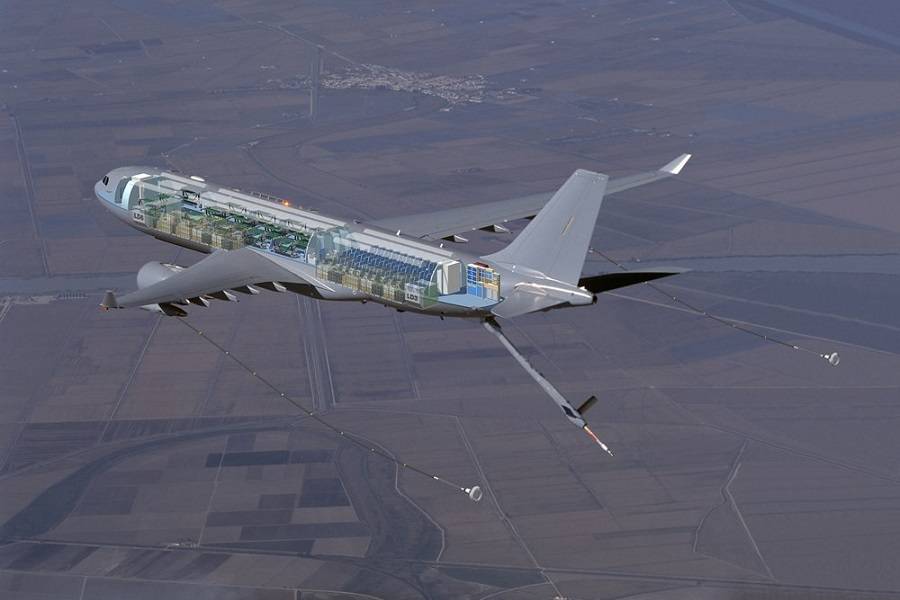
Unlike the KC-46, Airbus designed the MRTT as a conversion. The customer can either convert an airliner themselves for military use, or they can have Airbus do it in Getafe, Spain. Compared to other aircraft the conversion is relatively simple. That’s because it takes advantage of one of the A330’s lesser-known secrets.
When Airbus designed the A330 and A340, they wanted to save a bit of money. So, they gave both jets the same wing. A330s simply don’t have engines at the outer positions, and obviously the inner engines are bigger. But the hardpoints for those outer engines are there. And fuel line fixtures, to feed those engines with fuel, are also there. So to convert the planes to feed fuel from those positions, Airbus simply needed to mount the appropriate pod. And they already had this pod, from the A310 MRTT!

But there is more to converting an airliner for such military use, than the wing pods. Airbus developed a boom for the middle position. This device actually flies using its movable mini wings, behind the aircraft. This version uses fly-by-wire. And the aircraft can also incorporate a mechanism to receive fuel, if the customer requires it. Finally, Airbus can configure the interior of the plane for a variety of purposes, ranging from cargo to medevac.
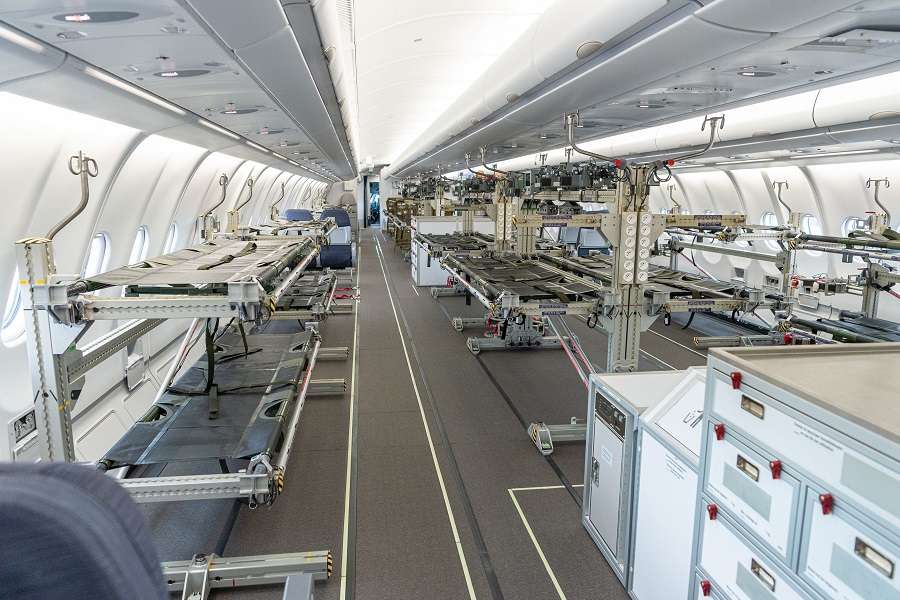
A Familiar, Military Airliner: Boeing 737 AEW&C
Since the 707 and KC-135 share a common ancestor, it’s only fitting to continue that relationship. So their descendant, the 737 airliner, has several military versions currently on offer. ‘AEW&C’ stands for Aiborne Early Warning and Control. Interestingly the US armed forces have not bought a version of this aircraft.
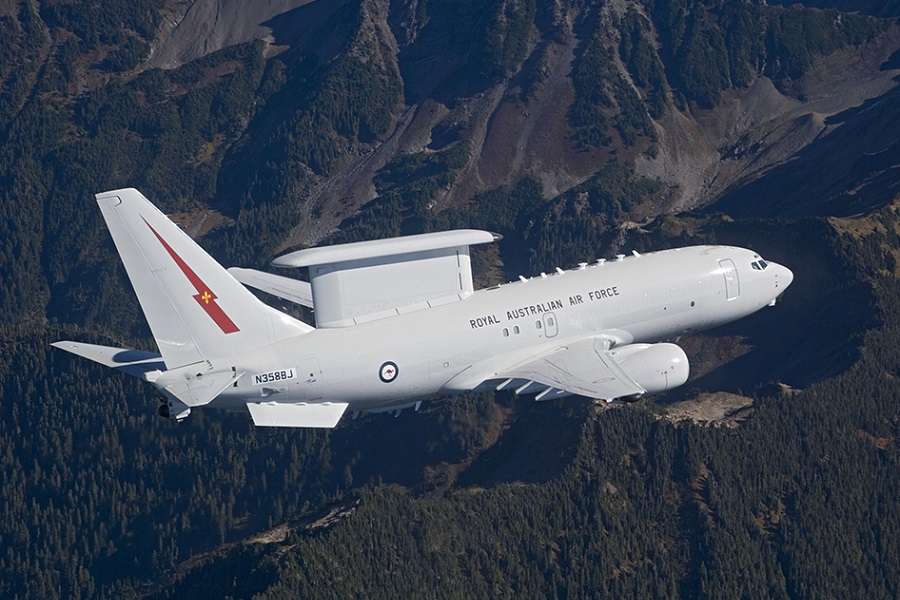
The radar on the back of the plane doesn’t rotate, unlike previous generations. This makes it a bit smaller, and its installation compact enough to fit the airframe of the 737-700. That’s the airliner this military plane is derived from, specifically the High Gross-Weight (HGW) version of it. Boeing also offers a version of the system that uses the 767 airframe. The US military could choose it, for commonality purposes with the KC-46. But they have other 737 airliners in military service.
The Boeing P-8 Poseidon
Poseidon is the God of the sea, so the name gives you a clue about the role of this aircraft. This 737-700 HGW can track submarines, and shoot missiles at ships it doesn’t like. Like the AEW&C version, it can also refuel in the air, if necessary. This is probably the single most successful military version of the 737 airliner so far. Just the US Navy has over 100 of them, but many more are in service around the world. Boeing will keep making them for a while.

A Military Plane That Is Still An Airliner: Boeing C-40A Clipper
This one is simple. It’s basically a 737-700C. That’s the Combi version of the 737, that can carry either passengers or cargo, or both. It comes in A-B-C versions, that vary depending on who is buying them (USAF, USN or others). Other than the radios, these aircraft are more or less standard 737NGs.
And that raises an interesting point. The C-40, P-8 and 737 AEW&C are all NG versions of the 737. And they are still in production. Boeing’s civilian 737 production has fully ‘migrated’ to the MAX variants, but military versions are a generation behind. In the case of the US military (the main customer), this airliner choice probably has to do with the engines.

The US military likes the CFM56. Decades ago they got over 1,000 of them, to replace older turbojets in the KC-135s. OK those are the CFM56-2s, not the CFM56-7s of the 737NG, but that’s not a big support problem. And there are other military aircraft in US service, with engines that have a lot in common with the CFM56. But we will examine those in another article.
Finally, another interesting consideration, about airliners in military service in general, is type ratings. As we know, the evolution of aircraft like the 737 has some limits, from the need for a common type rating between its generations. Well, militaries generally don’t care about type ratings. So their various 737s have changes in instrumentation that don’t really happen in the civilian aircraft. But they still avoid radical changes, to make it possible to use civilian simulators for training. However they have their own sims, too.

Any More?
There are quite a few other cases where civilian airliners have military roles. However many of them just don’t have military designations. However things like radios and other systems are often incorporated in such aircraft. It’s also worth mentioning that there are other 767 conversions into refuelling aircraft.
In all, militaries are good customers. So aircraft manufacturers generally sell whatever they can to them! And militaries keep these jets around for a long time. This brings helpful support contracts to these manufacturers. Such military sales also tend to be good publicity for manufacturers of airliners – when things go well.




2 comments
T Thomas
You missed the longest serving of them all. The De Havilland Comet, serving with the British RAF and RN right up until 2010 in various guises, including AWACS and refuelling.
Spyros
Good point. But of course the article focused on current production aircraft, the two exceptions (DC-3, KC-135) non-withstanding. However the DH Comet and its offshoots (and engines!) certainly deserves its own article, though. Duly-noted!
Not sure ‘longest serving’ is accurate, though. The KC-135 is a few years younger, but will likely continue serving in a couple of roles, for another decade.